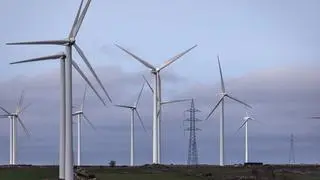The Tata Group declined to participate in the government’s ₹18,100-crore production-linked incentive (PLI) scheme as it found the return on the risk involved unfavourable.
The scheme for advanced chemistry cell (ACC) battery storage to achieve manufacturing capacity of 50 gigawatt-hour (GWh) is part of the government’s efforts to promote adoption of electric vehicles and lower the dependence on fossil fuel-based transportation.
“We had considered this extensively and, when we looked at the conditions of this particular PLI, we found that the risk-return equation was not working out for us and, therefore, we decided to stay away from it after having done humongous amount of work,” PB Balaji, Chief Financial Officer of Tata Motors, said in a recent post-earnings conference call on being asked why the Tata Group did not participate in the scheme.
Last month the Centre received an overwhelming response to the scheme with participation from 10 companies — Reliance New Energy Solar (RIL subsidiary), Hyundai Global Motors, Ola Electric, Mahindra & Mahindra, Larsen & Toubro, Amara Raja Batteries, Exide Industries, Rajesh Exports, India Power Corporation, and Lucas-TVS. The bids were for a capacity of 130 GWh, more than twice the manufacturing capacity to be awarded.
The manufacturing facility would have to be set up within two years, while the incentive would be disbursed over a period of five years on the sale of batteries manufactured in India.
Market leader
Tata Chemicals, the world’s third largest soda ash producer, is leading the Tata group’s charge as far as interest in producing EV batteries goes., including plans for a lithium-ion battery production plant in Gujarat.
Tata Motors has a near-monopoly in the four-wheeler EV market in India — 81 per cent share as of December 31, 2021, and sale of 10,011 units during the nine months. With just two products — Nexon EV and Tigor EV — the company has capitalised on the robust demand for EVs in India, with an average waiting period of four months.
Tata Motors plans to have 10 EVs by 2025 in varying ranges, price points and styles. It vies to retain its market leadership even as rivals like Hyundai and Mahindra & Mahindra rev up their EV play.









Comments
Comments have to be in English, and in full sentences. They cannot be abusive or personal. Please abide by our community guidelines for posting your comments.
We have migrated to a new commenting platform. If you are already a registered user of TheHindu Businessline and logged in, you may continue to engage with our articles. If you do not have an account please register and login to post comments. Users can access their older comments by logging into their accounts on Vuukle.